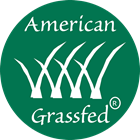In recent years, grassfed meat has gained popularity among consumers seeking healthier, more sustainable food options. However, the rise in demand has led to a proliferation of labels and claims, making it challenging to discern which products genuinely meet the standards of grassfed production.
This article aims to debunk common misconceptions surrounding grassfed labeling, providing clarity to help consumers make informed choices.
Understanding Grassfed Labeling
Grassfed labeling can be confusing, with various terms and claims that might mislead consumers. It’s crucial to understand what these labels signify and how they differ.
What Does “Grassfed” Mean?
Grassfed should mean that the animals were fed a diet of grass and forage, as opposed to grain-based feeds. This diet should be maintained throughout the animal’s life, from weaning to harvest. However, not all grassfed labels adhere to this strict definition.
The Role of Certification
Certification by reputable organizations, such as the American Grassfed Association (AGA), ensures that the products meet rigorous standards. AGA certification guarantees that the animals are fed a 100% forage diet, are raised on pasture, and are not treated with antibiotics or hormones. This certification helps consumers trust the integrity of the grassfed label.
Common Misconceptions About Grassfed Meat
There is no legal definition for grass- finished and it is a meaningless claim in the AGA standards, since our standards require a 100% forage based diet from birth to harvest. You can see the term grass finished on products in the marketplace and the animals may have had grain removed from their diet for the last few weeks and put on grass. It can be a misleading term.
Misconception 1: Grassfed Meat Is Always Organic
Another misconception is that grassfed automatically means organic. No, they are not synonymous. Organic certification is a USDA program that insures that the animals have only been fed organic feedstuffs and involves regulations about pesticide and fertilizer use, among other things which are not necessarily covered under grassfed labels. If you prefer meat that meets organic standards, it’s important to look for products that carry both certifications.
Misconception 2: All Grassfed Meat Is Created Equal
Not all grassfed meat is produced under the same conditions. Factors such as the quality of the pasture, and the overall management practices can significantly affect the quality of the meat. The American Grassfed Association’s standards ensure that animals are raised humanely and sustainably.

Benefits Of True Grassfed Meat
Health Benefits
True grassfed meat is often higher in beneficial nutrients such as omega-3 fatty acids, CLA (conjugated linoleic acid), and antioxidants than grain-fed meat. These nutrients contribute to various health benefits, including improved heart health and reduced inflammation.
Environmental Benefits
Raising animals on a grassfed diet is generally more sustainable and environmentally friendly. It promotes better soil health, reduces the need for chemical fertilizers, and helps in carbon sequestration. By choosing AGA-certified grassfed products, consumers support farming practices that are better for the planet.
Animal Welfare
Grassfed certification means better living conditions for the animals. They are raised on pasture, which allows them to engage in natural behaviors and live in a more humane and stress-free environment.
Making Informed Choices
Reading Labels Carefully
Consumers should read labels carefully and look for certifications that align with their values to make informed choices. The American Grassfed Association’s certification is a reliable indicator of high-quality, truly grassfed meat.
Asking Questions
Don’t hesitate to ask your butcher or meat supplier about the origins and farming practices behind the meat you purchase. Transparency is key to ensuring that products meet your standards.
Empowering Consumers With Knowledge
In conclusion, understanding the truth behind grassfed labeling is essential for making informed decisions about the meat we consume. By debunking common misconceptions, we can better navigate the marketplace and choose products that align with our health, environmental, and ethical values.
The American Grassfed Association provides a trustworthy certification that guarantees the highest standards of grassfed production. For more information and resources, visit the American Grassfed Association.
Informed consumers are empowered consumers. By choosing AGA-certified products, you support sustainable farming practices, promote better animal welfare, and enjoy the health benefits of truly grassfed meat. AGA is the only USA only grassfed certification.






